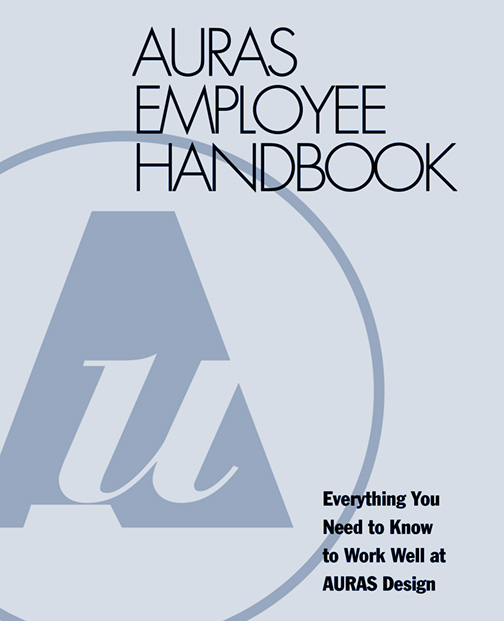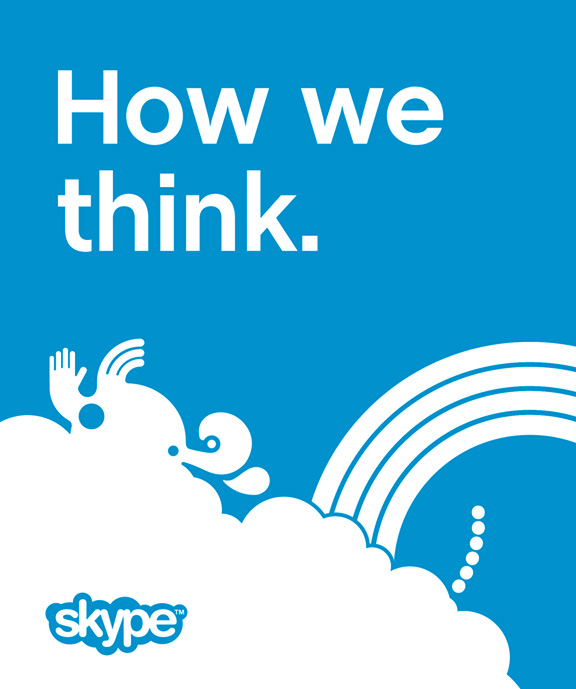When you are a fledgling business, hiring new people can be a very ideosyncratic process. At AURAS, I thought potential hires are often leery of asking hard questions of the owner (and the hirer), so, at AURAS, final prospects had an opportunity to interview with only the staff and find out what kind of tyrant the owner might be. Once hired, the standard introduction for new employees consisted of a quick round of meet-your-fellow-staff, encouragement to poke around the studio and see what’s where, and assurance it’s OK to ask lots of questions.
But the more people who worked here, the more becoming part of AURAS needed more explanation. Not just a simple run-through of benefits and operating procedures, but a comprehensive description of the spirit of the organization, clear ideas of what constitutes success at work, and the participatory role an employee should play in becoming part of our team.
In other words, an employee handbook.

I asked other studios to give me copies of their book, and I was surprised that most design studios—even larger ones with dozens of people—never made one. The few that did were reluctant to share the document with me.
Then I asked a few clients at large associations with hundreds of employees and actual HR departments to send me the lawyer-vetted handbooks they distributed to new hires. At large businesses and associations, codifying employee benefits, conduct, and obligations amounted to a written contract used as a tool to merit career advancement, judge annual employee evaluations, and provide a rationale for termination. The language was full-blown officialese and often negative in tone. That was definitely not what I wanted.
I wanted a simple document that clearly defined what a day at AURAS was like, what behavior was appreciated, unhelpful, or abhorrent. I wanted staff to know what was expected of them to thrive in our studio and what benefits were part of their employment. But above the details, I wanted everyone to understand the zeitgeist of AURAS, the environment that encourages creativity and comfort, and most important—how to become actively part of a shared experience.

Yes, experience taught us that there still needed to be clear restrictions on abusing the space, the equipment, or other people, but they also needed encouragement to improve the studio’s daily work life, suggest ways to grow, and make personal contributions.
Around that time, I stumbled upon a short in-house document produced at Skype, and thought it had a remarkable tone that was exactly what I wanted to convey to my own people. Using ideas from that, we worked together to craft a handbook.
The handbook we produced in the early aughts was given to final prospects and used to set the expectations of new hires. It presented benefits and perks but also described how personal responsibility led to trust, which allowed increasing flexibility. It made the studio more creative and productive—and more fun.
AURAS has had a small, stable staff for over the last decade, and there’s not been much use for the handbook these days, but, rereading it recently, there’s nothing I would change.